Ever wished for smooth turns and curves on hard snow? Yeah, so have I.
Luckily, we have a solution that allows you to achieve that. And that includes sharpening your skis’ edges. Something very simple can cause quite an upgrade, you can note it yourself.
Overview of Skiing
When it comes to skiing, sharp edges are essential for optimal performance. The sharpness of the edges helps you to re-establish great balance and enhance your performance.
But how do you get those razor-sharp ski edges?
There are a few key steps involved in sharpening and maintaining the edges of your skis. And it is important to understand them if you want to get the most out of your skiing experience.
In this step-by-step guide, we’ll take you through the basics of ski edge sharpening. From the different types of edges to the tools and techniques you’ll need to keep your edges sharp.
This way, you can get the best of your skis while having fun. So, let’s get started!
Introduction: What Is the Purpose of Sharpening Your Ski Edge?
Ski edge sharpening is the process to file down the edges of your skis to create a sharp, acute angle. This angle is important for providing the grip and control needed to make precise turns on the snow surface.
It is also important to protect your skis from damage by reducing the chance of edge catching in the snow buildup.
Skis are made of various materials, such as aluminum, steel, and titanium. Each type requires a different technique and edge angle.
Edge angle is the angle of the edge relative to the ski. It affects the way your ski performs in different snow conditions.
In short, if you want to prevent getting awkwardly stuck in snow conditions, the solution is to sharpen the edges of your skis.
Ski Tuning 101 – Types and Edge Angles
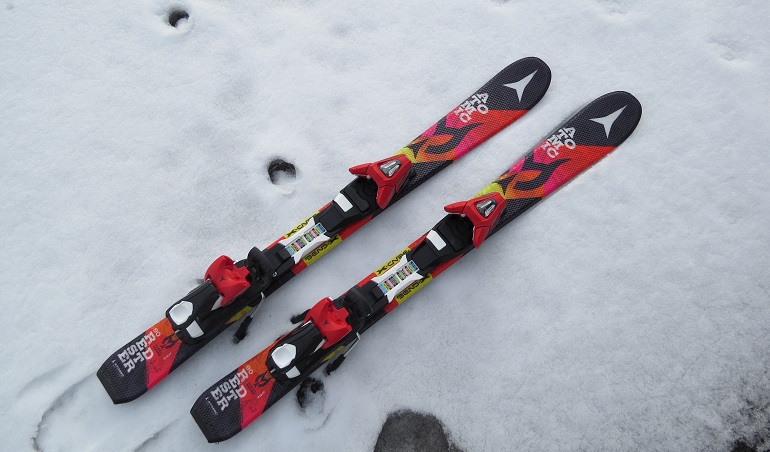
There are two main types of ski edges:
1. Side Edge
It runs along the length of the ski. It is usually made of aluminum or steel. Commonly, its bevel creates a more acute angle that can be adjusted to your style.
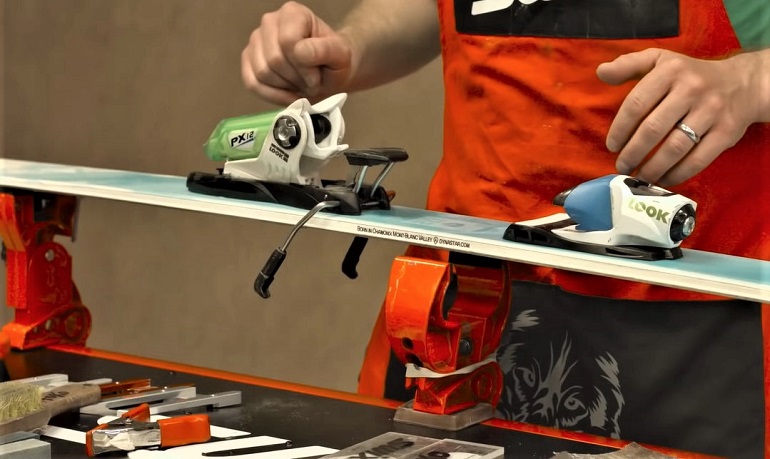
2. Base Edge
This edge runs along the width of the ski. It is usually made of titanium, and its bevel creates a slightly different angle than the side edge. It can also be adjusted to suit your technique.
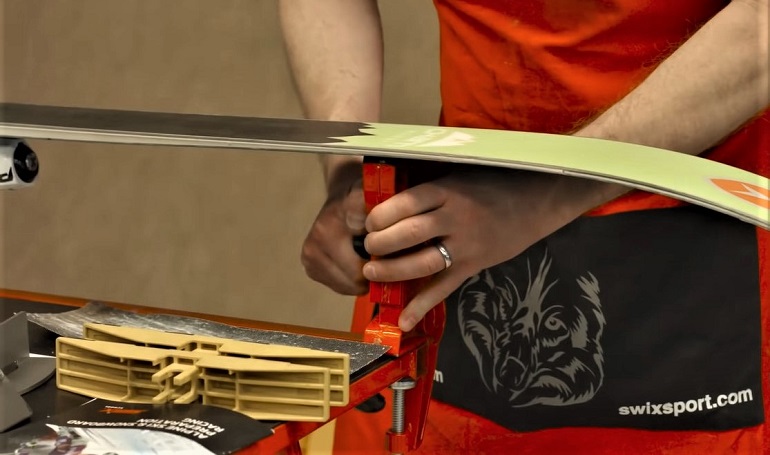
3. Edge Angles
It is relative to the ski. It affects the way the ski performs in different snow conditions and can be adjusted to what you find comfortable.
Edge angles range from 0 (completely flat) to 90 degrees (completely sharp). The optimal edge bevel for your skis depends on your skill level and the type of snow you are on.

The degree of edge angles is determined by the angle of the bevels on both the side edge and base edges. The angle of the bevels determines the angle of the edge of the ski.
Ski Tuning 102 – How To Remove Burrs and Rust From Edges of Your Skis?
First and foremost, beginners need to have the appropriate tools for the ski they use. Most recreational skiers intend to wing it, but that isn’t safe.
For each type of ski, finer stones are made to start tuning the edges of the ski.
So, if you intend to remove the rust and burrs, you need a file guide, diamond stone, gummi stone, ski vise, and a strong rubber band.
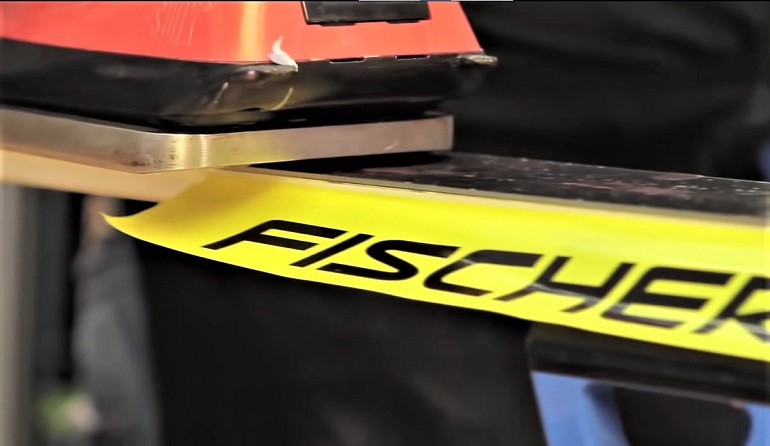
The rubber band will be used to hold the diamond stone in place while sharpening the side edge.
1. File Guide
You can use a file guide to set the angle of the edge. File guides should be set to the correct angle for the side edge and the base edge. It helps to maintain the polishing.
2. Diamond Stone
The diamond stone is used for filing the edge of your ski. You should use it to even out the burrs and level the metal edge.
Start removing burrs from the center to the direction of the tip, with the diamond stone flush with the entire edge. The file guide works well during this process.
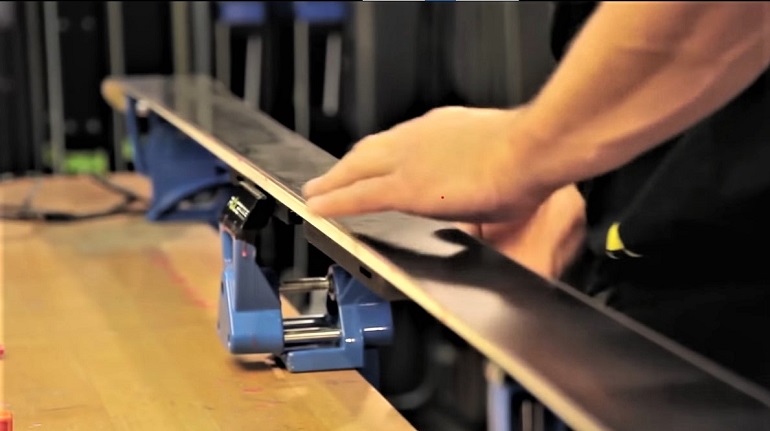
Ideally, because it is light to scrap, so the diamond stone files away the burrs and creates a smooth and even edge.
3. Gummi Stone
It is used to polish out the edge material and remove the rust from the side edge. Because your edge needs to be sharpened, the rust can dull the blade and cause it to get stuck in hard snow.
It is less abrasive and gives a shiny finish while removing rust on the rail.
4. Ski Vises
These are used to hold your skis in place during their tuning on the table. They hold your skis while you pamper them with other tools.
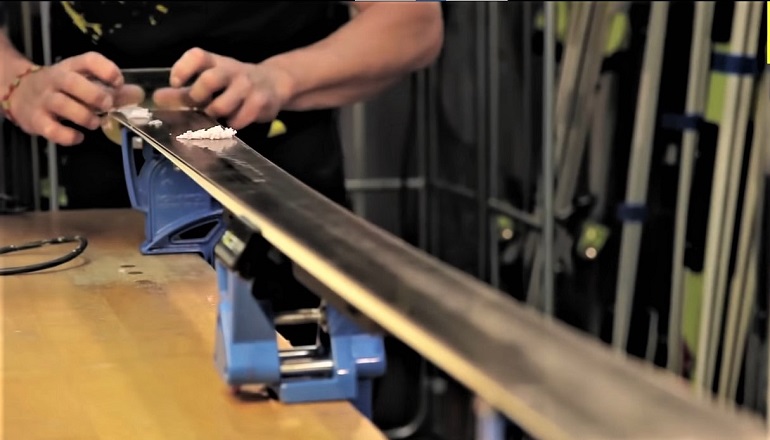
Ski Tuning 103 – How To Sharpen Skis’ Side Edges
When you tune skis, you have to make sure your performance, and your fingers, aren’t compromised. So follow the steps below to achieve the perfect tune for your skis.
1. Free Mess: Find a Suitable Location
The best way to wax, adjust, and maintain the convex shape of your skis is to start tuning it in a location where you are free to make a mess and still have room to move around.
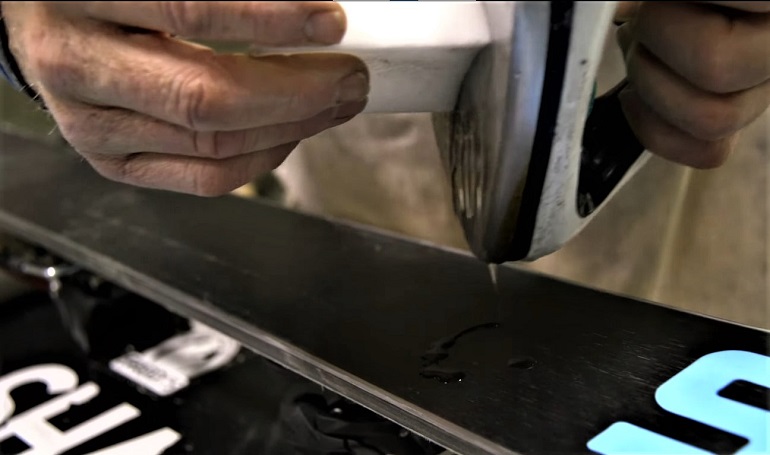
2. Positioning: Secure the Position of Your Skis in the Skis’ Vise
As the step suggests, you must position your skis on the vise. Otherwise, you can use alternate objects that will help in standing the skis higher for better contact.
3. Use Ski Tuning 102: Deburr the Edges
Refer to the point above (Ski Tuning 102 – How To Remove Burrs And Rust From Edges Of Your Skis?) when you deburr the edges. Light drag the diamond stone to the side edges and evenly tune the side edge bevel. Keep the contact of the tool flat against the metal edges to avoid them from getting round.

4. Sharpening Part I: Base Edge Tuning
First, flip your ski, so the base material is more observable. Next, use the bevel angle gauge to set the degree of the base edge angle to the desired level. Once the angle is set, use the coarse file to file down the base edge bevel. Make sure to keep the file guide in contact to file the base edge bevel evenly, working from the center to the far edge. Use the file guide to ensure the bevel angle is consistent along the entire base edges. You must be careful during the files to prevent a base high. Pull back the tool
5. Sidewall Planning: Maintain Better Grip and Control
A sidewall cutter is used to cut smoothly and remove any excess sidewall edge material from your skis. It enhances performance and grip and provides a better fit.
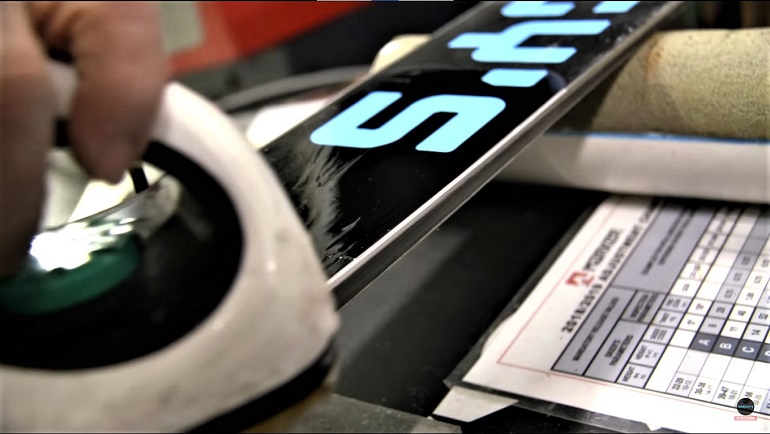
6. Sharpening Part II: Side Edge Tuning
It is a relatively simpler process than base edge bevel filing. First, use a file guide to set the side edge bevel to the desired degree. Then use the diamond stone to file down the side edges. Use the file guide to ensure that the side edges are filed evenly and that the angle is consistent throughout. Ensure that the side edge is not too acute, as it will start to knife the snow instead of gliding. Use the file guide to help prevent that.
7. Polishing: Polished Edges With a Handy Diamond Stone
When you are done sharpening your side edge bevel and your base edge bevel, use a fine-grit diamond stone to polish the edge bevels. Polishing removes the file excess breathing your skis back to life.
8. Switch to Difference: Detune the Tip and Tail

It might sound scandalous, but the ski brake, the tip, and the tail work best when they are a bit round. To achieve that, use the diamond stone with the file guide to knife away your tip and tail.
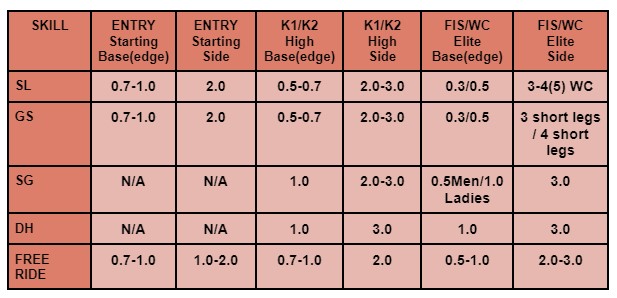
Ski Tuning 104 – How To Maintain Your Edge
The most important thing is to keep your edges clean and free of dirt and excess waxing.
Check the edges’ angles periodically. Because over time, they can change due to wear and tear. As soon as you notice, use a file guide and file away.

Or you can contact the shop that can help you with it.
Conclusion
Sharpening your edges is a simple process. However, it requires some knowledge and experience. If you choose, you can simply go to the shop for the maintenance.
But with the right tools and techniques, and our guide, of course, you yourself can execute the solution.
Now that you have completed all the steps, it’s time to go skiing! See you!
0 Comments